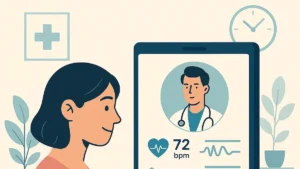
Discover the criteria and clinical process for Diagnosis of Gender Dysphoria. Gain valuable insights and understanding in this comprehensive blog post.
Gender dysphoria is characterized by a marked incongruence between an individual’s experienced or expressed gender and the gender they were assigned at birth. Diagnosis of Gender Dysphoria is a complex process that involves careful assessment by mental health professionals. Let’s explore the criteria used for Diagnosis of Gender Dysphoria, the role of mental health professionals in the diagnostic process, and the steps involved in reaching a diagnosis.
Gender Identity: An Overview
Gender identity refers to an individual’s deeply held sense of gender. It can include identities like male, female, or something unique to the individual. This internal sense of gender is intrinsic and self-defined, not necessarily related to external physical characteristics or societal expectations.
The connection between gender identity and gender dysphoria lies in the incongruence between an individual’s deeply felt gender identity and their assigned gender. When a person’s assigned gender at birth matches their gender identity, they are cisgender. However, for transgender individuals, a discrepancy exists between their experienced or expressed gender and the gender they were assigned at birth.
The old term for gender dysphoria was “gender identity disorder.” However, this term has been retired as it could imply that being transgender is a disorder.
Criteria for Diagnosis of Gender Dysphoria
To diagnose gender dysphoria, mental health professionals rely on established criteria outlined in diagnostic manuals such as the Diagnostic and Statistical Manual of Mental Disorders (DSM-5). The same manual suggests that the prevalence of gender dysphoria is within 0.005–0.014% of the population for individuals assigned male at birth and around 0.002–0.003% for those assigned female at birth. The key criteria for diagnosing gender dysphoria are as follows:
A Strong Desire To Be of a Different Gender
Individuals with gender dysphoria typically experience a strong and persistent desire to be of a different gender than the one they were assigned at birth. This desire may manifest in various ways, including wishing to dress and present themselves as the desired gender.
Incongruence Between Expressed Gender and Assigned Gender
Significant incongruence should exist between the individual’s experienced or expressed gender and their assigned gender. This gender incongruence must cause clinically significant distress or impairment in social, occupational, or other important areas of functioning.
Duration and Persistence
The diagnostic criteria require that these feelings of incongruence and distress be present for a significant duration, typically at least six months. This criterion helps distinguish between transient gender exploration and more persistent experiences of gender dysphoria.
Not Attributable to Another Condition
Mental health professionals must rule out the possibility that the distress is due to another mental health or medical condition. Conditions like schizophrenia, where delusions of gender identity may occur, must be considered.
Mental Health Professionals Involved in Diagnosis
Diagnosing gender dysphoria is a multidisciplinary process that involves several mental health professionals working together to provide comprehensive care. Here are the key professionals involved:
Psychologists and Psychiatrists
Psychologists and psychiatrists play a central role in assessing and diagnosing gender dysphoria. They conduct clinical interviews and assessments to understand the individual’s gender identity, explore co-occurring mental health conditions, and evaluate the persistence and severity of dysphoric feelings.
Licensed Therapists and Counselors
Licensed therapists and counselors provide ongoing support and therapy to individuals with gender dysphoria. They help clients cope with distress, navigate the challenges of gender transition, and address any mental health concerns that may arise during the diagnostic process.
Endocrinologists
In cases where individuals pursue medical interventions like hormone replacement therapy (HRT) or gender-affirming surgeries, endocrinologists play a vital role. They assess the physical and hormonal aspects of gender transition, monitor hormone levels, and manage associated medical concerns.
Pediatricians and Adolescent Medicine Specialists
Pediatricians and adolescent medicine specialists can contribute to the diagnostic process for children and adolescents with gender dysphoria. They assess physical development, guide families, and collaborate with mental health professionals to ensure appropriate care.
The Diagnostic Process
The diagnostic process for gender dysphoria is comprehensive and patient-centered. It involves several steps to ensure an accurate diagnosis and to provide individuals with the necessary support and care:
Initial Assessment and Clinical Interview
The process begins with an initial assessment and clinical interview conducted by a mental health professional, typically a psychologist or psychiatrist. During this interview, the individual discusses their feelings, experiences, and history related to gender identity.
Psychological Evaluation
A psychological evaluation may include standardized assessments and questionnaires that help quantify the individual’s distress and the extent of gender dysphoria. This evaluation aims to measure the individual’s psychological well-being objectively.
Exploration of Gender Identity
The mental health professional explores the individual’s gender identity, including their preferred name, pronouns, and the extent of their desired gender expression. This exploration is conducted in a supportive and non-judgmental manner, respecting the individual’s autonomy and self-identification.
Assessing Co-occurring Conditions
Assessing co-occurring mental health conditions is crucial as they can impact the diagnostic process and treatment planning. Mental health professionals must address depression, anxiety, or substance abuse.
Collaborative Care Planning
Once a diagnosis of gender dysphoria is confirmed, mental health professionals collaborate with the individual to create a personalized care plan. This plan may include psychotherapy, hormone therapy, and, in some cases, gender-affirming surgeries. It ultimately depends on the individual’s preferences and medical suitability.
Cultural Competence and Sensitivity
Cultural competence and sensitivity are integral to the diagnostic process for gender dysphoria. Mental health professionals must be attuned to the unique experiences and challenges faced by transgender and gender-diverse individuals. This includes respecting the individual’s chosen name and pronouns, understanding cultural factors that may influence their identity, and providing a safe and affirming environment for disclosure.
Conclusion
Diagnosing gender dysphoria is a complex but essential process that involves a careful assessment by mental health professionals. The diagnostic criteria outlined in diagnostic manuals help ensure a standardized approach to diagnosis. At the same time, a multidisciplinary team of professionals collaborates to provide comprehensive care.
Through culturally competent and patient-centered evaluation, individuals with gender dysphoria can receive the support and treatment they need to navigate their gender journey and achieve better mental health and well-being. As our understanding of gender diversity evolves, mental health professionals must continue to adapt their diagnostic and treatment approaches to meet the diverse needs of this population.








